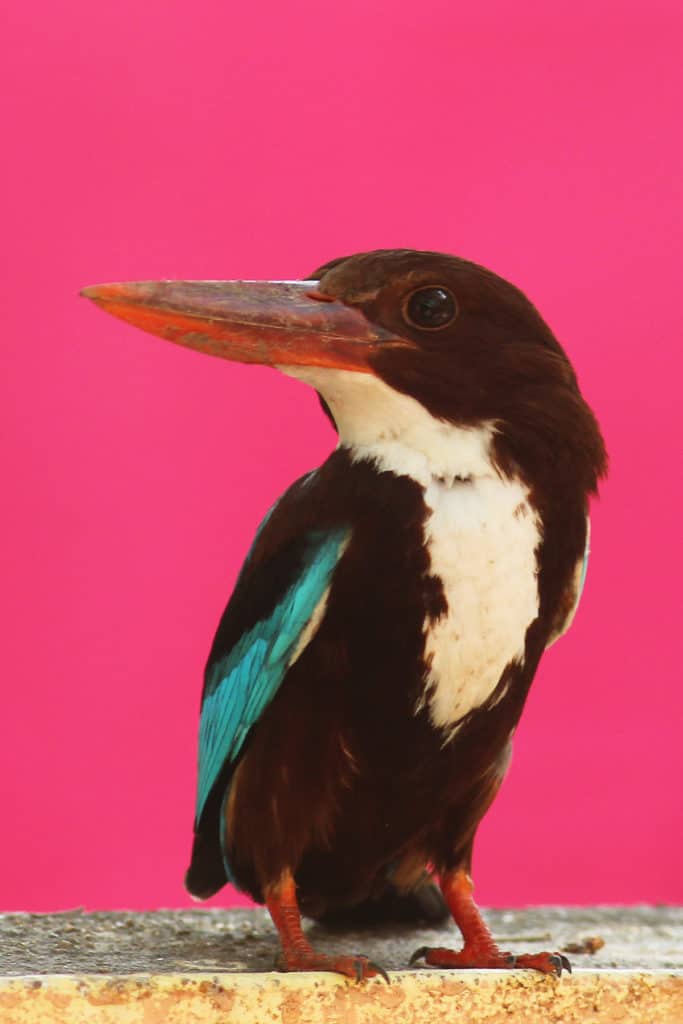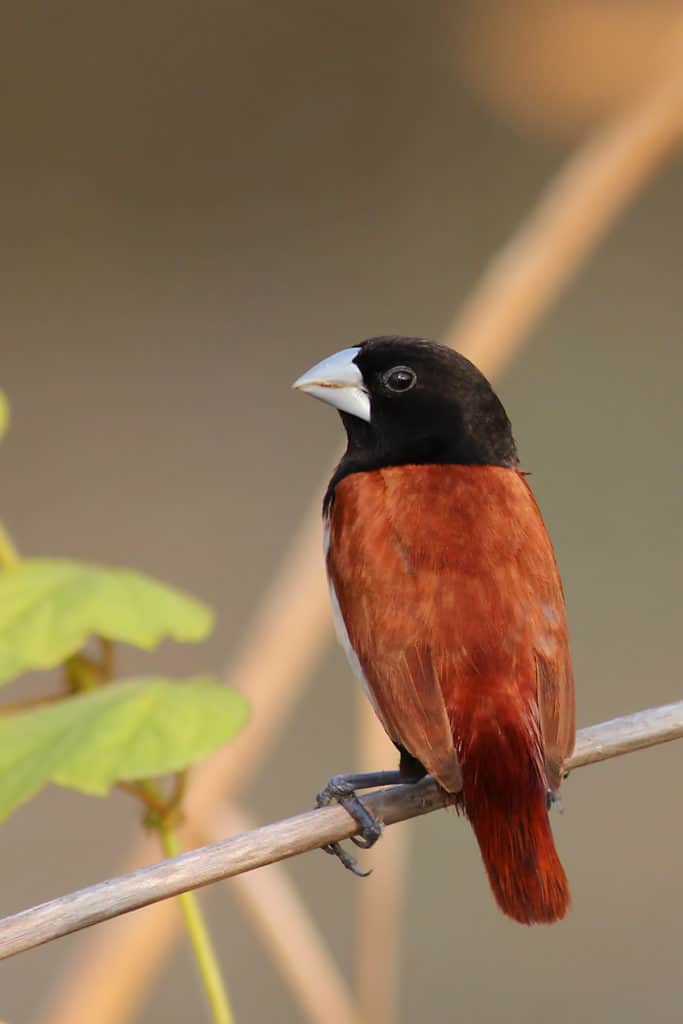Every evening, A M Aravind, a birdwatcher in Madipakkam, ensures he spends at least an hour hanging around his balcony or terrace. The lockdown may have temporarily halted many of his regular activities, but not his bird watching hobby. Though he could not travel to the woodland edges or the marshes, Aravind has spotted over 35 species in his neighbourhood habitat over the past three months.
Like Aravind, many city residents have taken to balcony birding or backyard birding this season, to enjoy a break from the mundane routine of the lockdown. The high-pitched, loud and persistent calls of the friendly koels, the rattling-whinnying call (or pecking) of the woodpeckers and the distinct hoots of owls are no longer alien to the ears of many Chennaiites who have rediscovered a new connection with their natural surroundings in this period of forced confinement.
The imminent rains signify greater activity among the winged population: Monsoon indicates new life; the mother bird teaches the offspring to fly, hunt for food and other activities. Bird watchers note that migration of birds also occur during the monsoon. With the advent of rains, waterbodies are full to the brim with freshwater, which attracts birds like pelicans, storks and egrets in large numbers.
As many public places remain closed due to the pandemic, it has brought these birds closer to us and created an opportunity for us to know more about them. Naturally, the concept of balcony birding has caught the fancy of many.
Getting started
- Analyse the environment in which you live
- Study the green cover in your neighbourhood
- Research and identify the bird species that are likely to visit your neighbourhood habitat. For instance, coconut trees are known to attract kingfishers.
- Spend time gazing at the greens and observing the activities of birds every day
Equipment for balcony birding
You wouldn’t need any special paraphernalia to begin. Mynahs, parakeets, jungle crows and pigeons are quite common in Chennai’s urban jungle and all you need is an eye and patience.
Spotting these birds does not require tools, until you plan to take it to the next level and camp out in the woods or swamps. Binoculars, a field guide (if you are a novice) and a good camera with zoom lenses are the equipment needed, if one is serious about birdwatching.
How to identify and document birds

- Photograph the birds. If it is of moderate quality, it can be uploaded on ‘Merlin Bird Id’, an application that helps identify different bird species. If there are multiple species matching with the photograph, one can short-list by answering some of the questions displayed on the app.
- If one is unable to capture the bird through the lens, they can note down minute details like colour of the bird’s head, shape, movements etc. and can discuss with expert birdwatchers or seek help from bird watching groups. Visit Chennai Bird Watchers and Tamil Nadu Bird Watchers and Tamil Nadu Birds on Facebook.
Fascinating observations
Breeding season begins a few months prior to the monsoons. Over the past few weeks, birdwatchers in Chennai have been able to capture a range of activities of birds sitting right from their balconies. The lockdown has been a blessing in disguise for these bird watchers.
“During the breeding season of Asian koels, I was able to witness the entire cycle — from how three male koels were signalling the female birds, to how they fight with crows while the female is laying eggs. Of course, observing all this requires a lot of time and patience,” Aravind says.
It is well-known that koels lay their eggs in the crows’ nests. So, how does it happen without the knowledge of crows? “The male koels tried to distract the crows by singing aloud when the female birds were laying eggs in the nest,” describes Aravind.
By the time monsoon arrives in Chennai (June to September), the chicks would have hatched and they can easily find food (insects and worms).
There were several unsual trends noticed too. Enthusiasts living in Pallikaranai sighted birds in the stretch from MSAJ College to SIPCOT, a rare, almost forgotten sight, in normal times, due to heavy flow of sewage in the marshland.
“As the industries in the locality remained shut due to the lockdown, the sewage flow was reduced, and groups of painted storks and other common species flew in for feeding,” notes Deepak Venkatachalam, a bird watcher from Suzhal Arivom, a bird-watching group.
Commonly spotted birds in Chennai’s urban jungle

Birds are everywhere and they do not need a special environment to survive. Yellow-billed babblers can be commonly spotted wherever there is green cover. The babblers usually fly around in groups of six or seven, hence they are commonly referred to as the ‘seven sisters’. These birds generally forage on the ground around bushes, trees and open areas.
“Although the varieties of birds in North Chennai may not be as rich as in the suburban areas or neighbourhoods around woods and water bodies, common birds such as blue rock pigeon, tailor birds, rose-ringed parakeets, red-wattled lapwing and black kites can still be spotted in Thiruvottiyur,” says Meghaa S, a bird watcher from North Chennai.
Tailor birds, Ashy Prinia, drongos, sun birds, bulbuls, white-throated Kingfisher, Flameback woodpeckers and Asian koels are common in the city and sighting from the balcony is not an arduous task.
Water birds like pelicans, spot-billed ducks, ibises, egrets can be seen flying overhead, if one lives near water bodies.
Should we feed these birds?
Bird watchers in the city strongly advise against feeding birds as it disturbs the ecological balance. “Birds are naturally capable of hunting their own food. When humans feed them, the birds become dependent on these sources and lose their natural touch of finding their own food. Feeding processed food also does no good for them,” says Aravind.
Dos and don’ts for balcony birding

- Be patient and aware.
- Keep water for them in earthenware or stainless steel bowls. Plastic containers and petrol cans are a strict no-no.
- Do not disturb the birds
- Do not artificially attract birds to your balcony garden.
- Be agile and watch out for their calls and observe their movements. Study more about birds and document your observations.
Ongoing events related to bird watching
Bird Count India, an informal partnership of organisations and groups working together to increase knowledge about bird distributions and populations in the country, conducts monthly and year-long challenges. For details, visit https://birdcount.in
Suzhal Arivom is organising live video conferences about bird watching and other events related to the environment. For details, visit https://www.facebook.com/KnowAboutOurEnvironment/
Resources for beginners
In a video series titled Neengalum Aagalam Bird-watcher, Aravind explains the distinct features of every bird including their colour, behaviour and calls, and shares important tips on bird watching for beginners. You can follow his channel at https://www.youtube.com/channel/UCnxJO5rJ2ODjVF48JJpOJdA
(Inputs from Deepak Venkatachalam, A M Aravind and S Meghaa.)